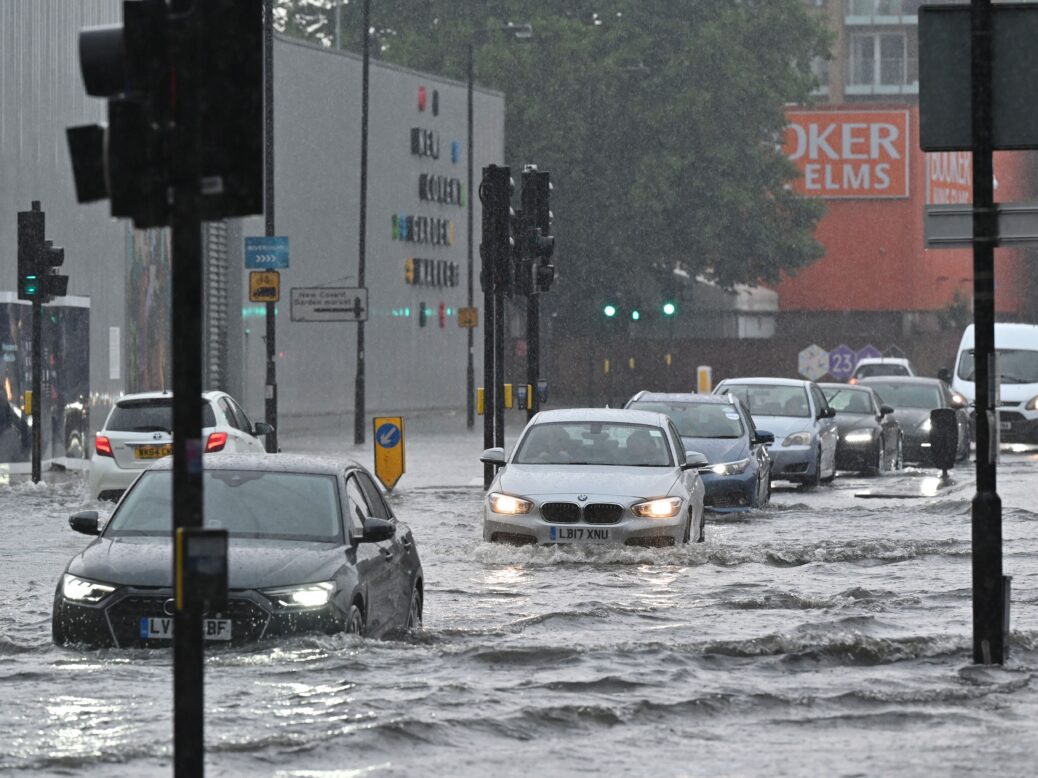
During the last weekend of July, a news story usually associated with further-flung parts of Britain ended up on my doorstep in Tower Hamlets, east London. Water cascaded through two of my upstairs neighbours’ flats from the roof of our block.
It had been raining heavily all afternoon, the downstairs gardens of the ground floor flats becoming paving-slabbed swimming pools and the road alongside them grey-water rapids.
I then saw reports of flooded hospitals, stations and roads nearby, as well as floods all over London. East London has been hit by flash floods before – in 2018, four people had to be rescued from their cars in Stratford – and parts of the capital, particularly to the city’s west by the Thames, have been brought to a standstill by flooding over the past few decades.
Yet the major storm damage in the UK public’s imagination has been cemented by recent flooding disasters in counties far from the capital – in particular, the 2014 Somerset floods, Storms Ciara and Dennis of the winter of 2019-20, which severely affected Yorkshire and the Midlands, and Storm Christoph, which mainly hit Wales and the north-west in January 2021.
Whenever and wherever floods strike, the same conversations repeat themselves, and politicians benefit from a form of divide and (mis)rule. Certain areas receive more central government support than others, some local authorities are more poorly funded and less prepared, and each area has its own environmental and planning considerations.
There is not, therefore, a discernibly influential and united campaigning response when it comes to life-ruining floods in Britain.
[See also: How floods divided Britain]
In 2015, for example, the leader of Leeds City Council called local flooding a “preventable disaster” and argued that the north of England had not received as much government support as Somerset had the previous year.
“South Yorkshire has received a drop in the ocean, whilst more prosperous areas have got the funding they need,” wrote Barnsley Central MP and South Yorkshire mayor Dan Jarvis last October, who had to push the government for nearly a year for a summit on Yorkshire flooding following the devastation in November 2019.
Following the December 2019 election, Boris Johnson was criticised for failing to visit flood-hit areas in many places in the north and Midlands that had recently caused a political upset by electing Tory MPs.
This fragmented approach to flood funding and strategy clearly is not working. As Mohammad Heidarzadeh, head of coastal engineering at Brunel University told the Guardian last year: “The country needs further investment in its flood systems, but such investment should be within a holistic and integrated framework.”
The Environment Agency called for a “complete rethink” of flooding strategy six years ago. “We are moving from known extremes to unknown extremes,” its deputy chief executive David Rooke warned at the time. And so it has turned out, year after year, from the evacuation by boat of Parkgate shopping centre in Rotherham in November 2019 to this week’s scenes of around 100 inpatients being transferred from Whipps Cross Hospital after heavy rainfall caused a power loss.
Now that extreme flooding has soaked all corners of the country, the tendency for them to “divide Britain” geographically – as Edward Platt, author of the 2019 book The Great Flood: Travels Through a Sodden Landscape, describes – may lessen beneath united calls for Westminster to grip the situation, as the waters of London’s flood plain lap at its own doors.






